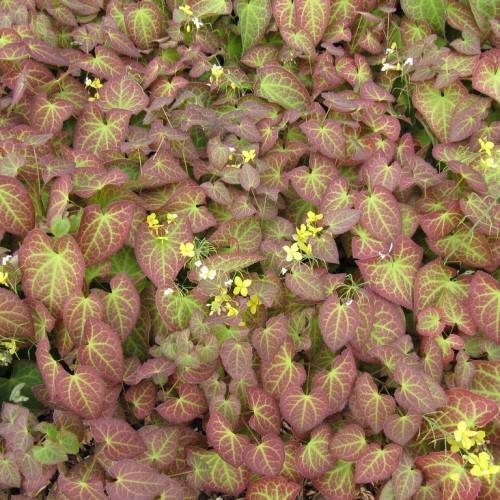
barrenwort
Epimedium perralchicum 'Frohnleiten'
Cycle:
Herbaceous Perennial
Watering:
Minimum
Hardiness Zone:
5 - 9
Flowers:
Flowers
Sun:
Part shade,full shade
Leaf:
Yes
Growth Rate:
Low
Maintenance:
Low
Drought Tolerant:
Yes
Care Level:
Medium
watering
To properly water barrenwort (Epimedium perralchicum 'Frohnleiten'), water deeply and infrequently, taking care to ensure that the soil around the roots of the plant is moist but not soggy. Water the soil whenever it begins to dry out, usually every 10-14 days. In the summer, allow the soil surface to dry out between waterings. Water in the morning to minimize fungal diseases. Applying a layer of mulch around the base of the plant will help keep the soil moist.
sunlight
Barrenwort (Epimedium perralchicum 'Frohnleiten') is a poetic shade perennial with delicate pink flowers that emerges in early spring. Barrenwort thrives in partially shaded areas with moist, well-drained soil, where it will receive between 4 to 6 hours of direct sunlight each day. This will provide the plant with enough light to adequately photosynthesize, as well as enough shade and moisture to prevent it from drying out. Barrenwort prefers springtime sun with less direct sun during the summer months. A location with morning sun and afternoon shade is ideal. In addition, the plant is tolerant of both deep and light shade, making it an attractive addition to both sun-dappled areas and areas where shade dominates. Avoid areas with deep shade or deep sun for prolonged periods of time, as this will reduce the health of the barrenwort.
pruning
Barrenwort (Epimedium perralchicum 'Frohnleiten') should be pruned in late spring, after the flowers have finished blooming. The pruning should be fairly minimal, as this plant is best when grown in an unpruned, natural shape. If pruning is necessary, only remove dead, damaged, or crisscrossing stems to improve the overall shape of the plant, although this should not be necessary. Pruning can also be used to control the size of the plant if necessary. Take care to not prune too much at once as it can cause damage and reduce flowering.
